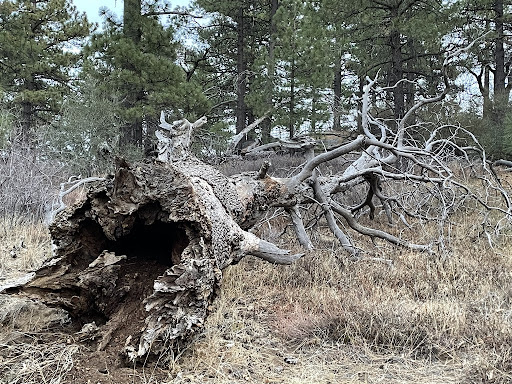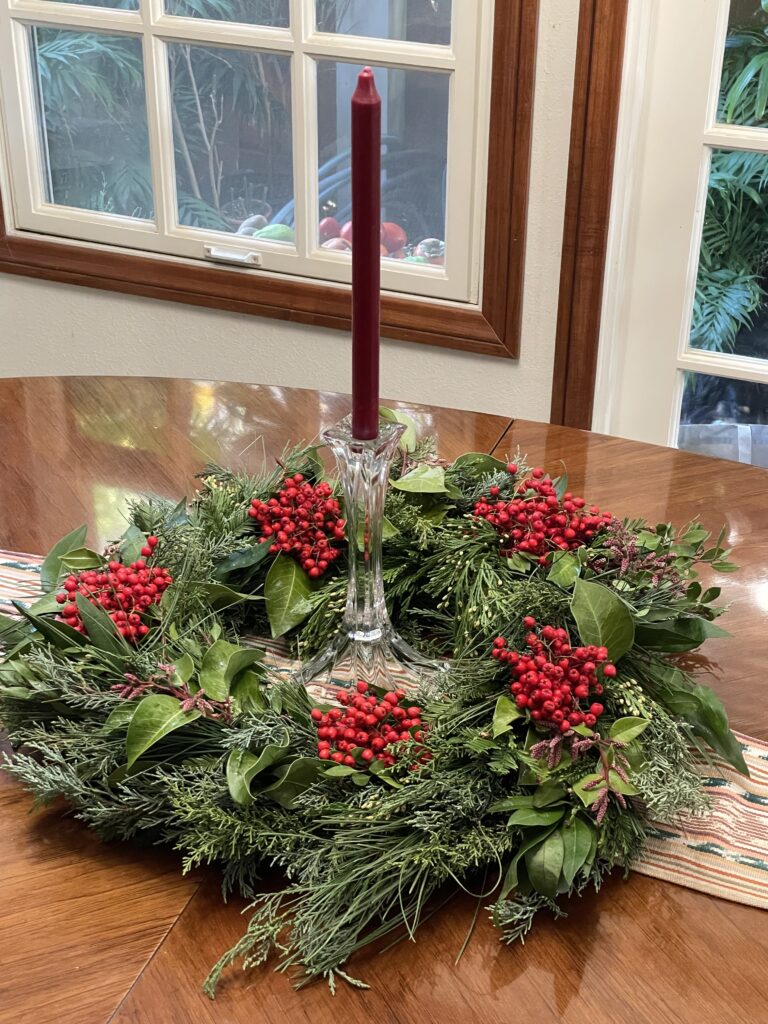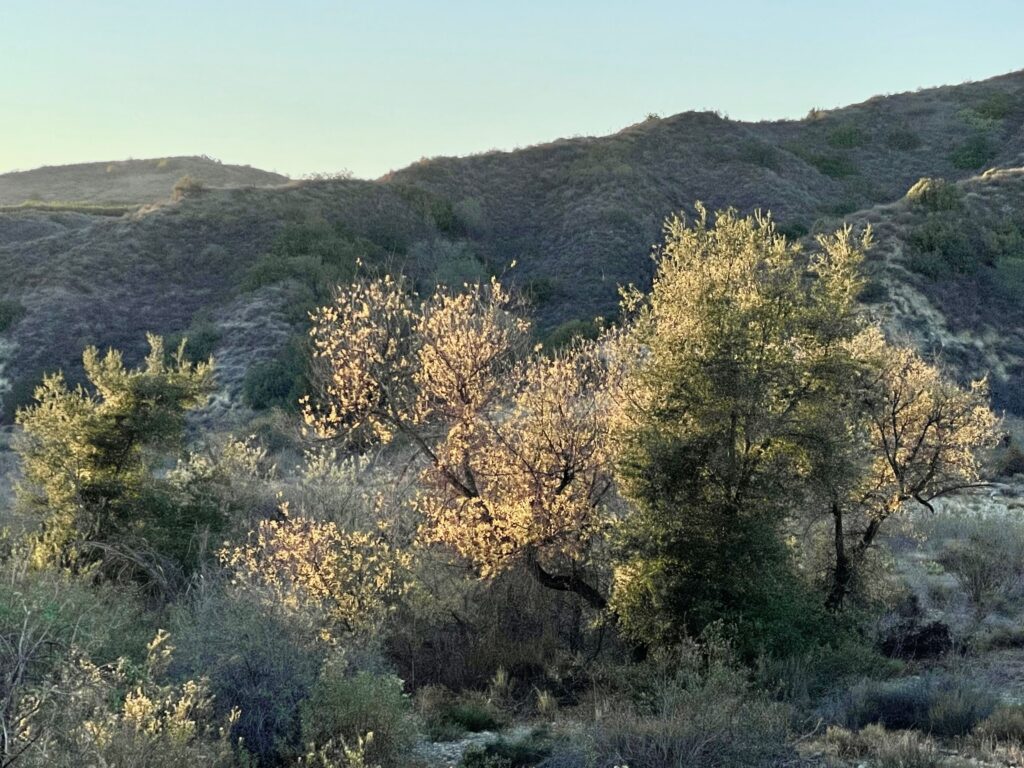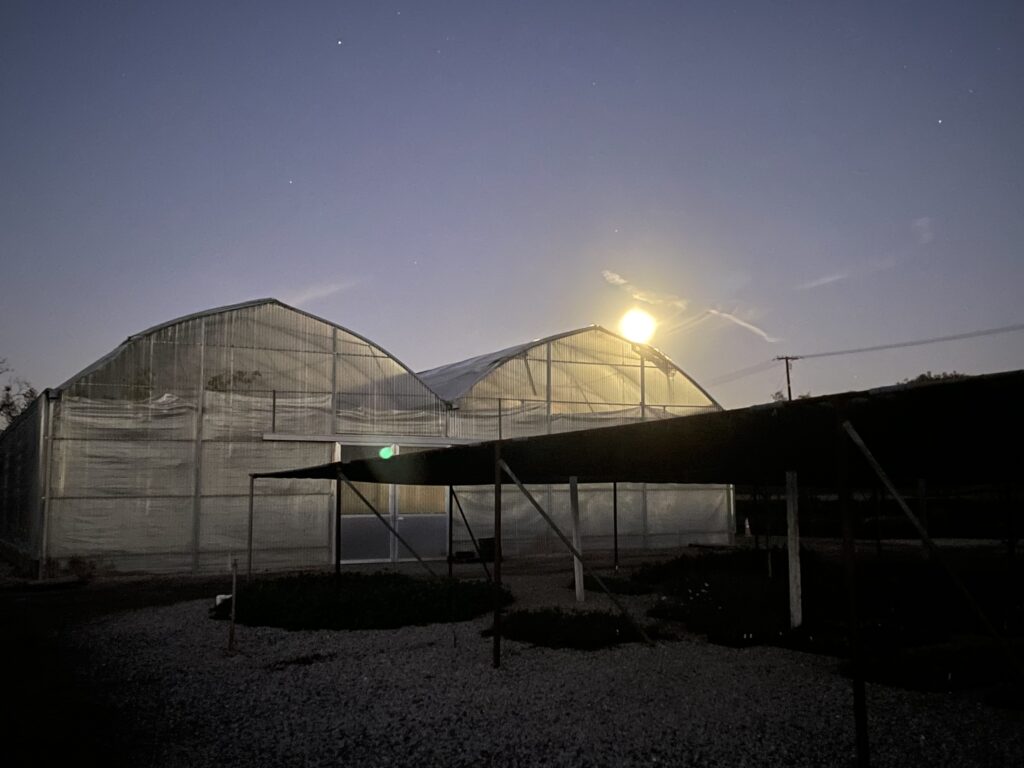December in the Natural Garden 2021
- Posted in: Blog, Monthly Garden Advice
- Tags Garden Maintenance, Seasonal Gardening, Words by Mike Evans

2021 WINTER SOLSTICE
Shadows long
Days short
Nights cold
Moods still
Coyotes roam where they will
Not concerned for their next meal
God’s dogs
He provides
By their scat we see
They eat a little of this
And a little of that
Just enough
Do they notice
The full moon
Alignment of planets
Low sun?
Certainly they howl
Something seen
By them
Not us
M.E.
December in the Natural Garden
Winter garden greetings! What a great month for a recharge! With any luck, our soils and our deep water table will get recharged with new moisture. Our garden plants will be recharging their internal systems in preparation for spring. The whole ecosystem is undergoing a silent recharge beneath cloudy skies and the sun’s arc low in the sky. And we can take a break from garden chores for a personal recharge on a cold windy trail, or curled up with a good book near a warm fire. Oh the joys of winter’s short days and its long nights!
Current events, history, review, and notes
We got, at long last, a nice rain mid month, one soaking event providing about 1.5”, which remarkably is one half the total for our season to date. We’re still on the dry side, and the recent rain event reminds us how desperately we need more. The forecast looks good for later this month.

Native wreath by Hilda Evans
Watering
Established gardens will not need sprinkler irrigation. Let them be. Brand new gardens might still need attention between rain events to keep the root ball and plant hole zones moist. Hand watering is best, soaking the area around the recently planted plant.
Related to Watering
With minor adjustments to the soil surface in your garden, you can get a lot more rainwater to penetrate deep into your soil. Between rains, build little berms and carve rivlets to retain water or direct it towards planted areas. Remember the rules: “slow it down, spread it out, soak it in.” Improving the microtopography with a shovel, trowel, and three-prong cultivator can also be a time spent pulling weeds, applying wildflower seeds, placing special rocks or drifts of aggregate top dress. My best gardening has always been done on my knees. You?

Pruning
This month cut your Matilija poppy to the ground, leaving little stems only 2-4” high. In spring, the plant will send up new shoots from its root base. Heat loving soft-branched plants (subshrubs) like verbena, Mexican sage, and some sunflowers can be cut back hard now, and they will resprout this spring as well. Most native subshrubs (buckwheat, sage, etc.) are setting up for spring and summer blooms, so be careful to not cut off the flower buds if you want to head them back or shape them. Woody shrubs can still be thinned, but most of that work should have been done in October/November.
Weeding
The soils are getting cold and the rains have been scant, making for pretty wimpy weed growth so far this year.
Mulching/Top Dress
This is the season when you can best see the value of natural leaf accumulation under your native plants. As ceanothus, manzanita, coffeeberry, toyon, gooseberry and all the usual suspects start to put on new growth, nutrients from the decomposing leaf litter are slowly making their way into the root zone. This is the natural cycle.
If you have bare areas in your dry-themed chaparral style garden, consider a top dress of decomposed granite, mineral aggregate or small stones in drifts, to create an honest and accurate look.
Feeding
Truth be told, the soils are a little warmer than usual for this time of year. If you haven’t applied an all purpose dry organic fertilizer, put that on your “to-do” list before the next rain. See the October 2021 Newsletter – Feeding for details.
Troubleshooting – Varmints, Pests and Diseases
Garden pests are generally never out of hand in an organic natural garden. Mid winter everybody takes a rest, so you can join in by not worrying about insects and varmints that would damage your plants.
Annual Wildflowers
It’s not too late to sow seed, but if you did this a couple months ago, for sure you’re seeing germination and small plants developing by now.
Adding New Plants
The rains have finally arrived! There is no better time to plant natives than during the rainy season and for that matter, while it’s raining.

Cold evening full moon rising
December 2021, Tree of Life
Engage
Writing a list of tasks for the mid winter natural garden is a bit like trying to fill up the page for a sixth grade book report. The fact is, there’s not much to write about nor much to do in the established natural garden… except spend quiet time in deep appreciation. Though in the various categories you find things you can accomplish this month, you really can do just nothing in your garden. These monthly newsletters are not to be taken as work orders, rather, guides on ways to enjoy your personal connection to your garden. We call it engagement.
Speaking of which, your natural garden, as a reflection of your favorite wild areas, could probably use some fresh input from you, the inspired gardener. Where do you get yours? Visits to wild places? Books? Both?
In our book store, Casa ‘La Paz’, we have a whole section on trail guides, hiking, birding, sketching, and journaling in nature. That might be a good start. Also, our TOLN team members spend a lot of our free time recreating outdoors, and we’re always ready to talk about back roads and hidden treasures we find in our nearby mountains and deserts. We also have book titles by the all-time best nature writers, so there should be no lack of inspiration.
But here’s the important part. After you pick a place and time and actually get there, bring it all in. Try to plan a reasonable distance and generous time that will allow for a “saunter” rather than a “hike.” I like to keep a sensible pace, cover some ground, but stop at any and every opportunity for a deep breath, a distant view, to watch a bird, identify a cloud, or snap a few pictures. I move along but take breaks for snacks and water, use my binoculars, or check my compass and map. And of course there’s always the rocks.
When we immerse ourselves in nature and study her many idiosyncrasies, we are often left wanting more, but also satisfied that it was enough… at least for now. To fully extend the experience, use everything learned on every outing for placing in your garden, new plants, rocks or stones, a few dry branches, burls, or dry sticks, taking into account natural patterns, shadows, and the illusion of movement and life that these natural elements will bring.
Winter gives us time for this. All you need is a day pack and a jacket, or a book, blanket and a fire. Then some inspiration and a shovel, along with a few plants, rocks, and sticks.
Hey, let’s kiss 2021 good bye! It’s been a great one! We made it!
From the December Garden,
Mike Evans
Questions? Help is just one call or one email away. Call (949) 728-0685 or email (with pictures if you like) our special helpline: gardenhelp@californianativeplants.com